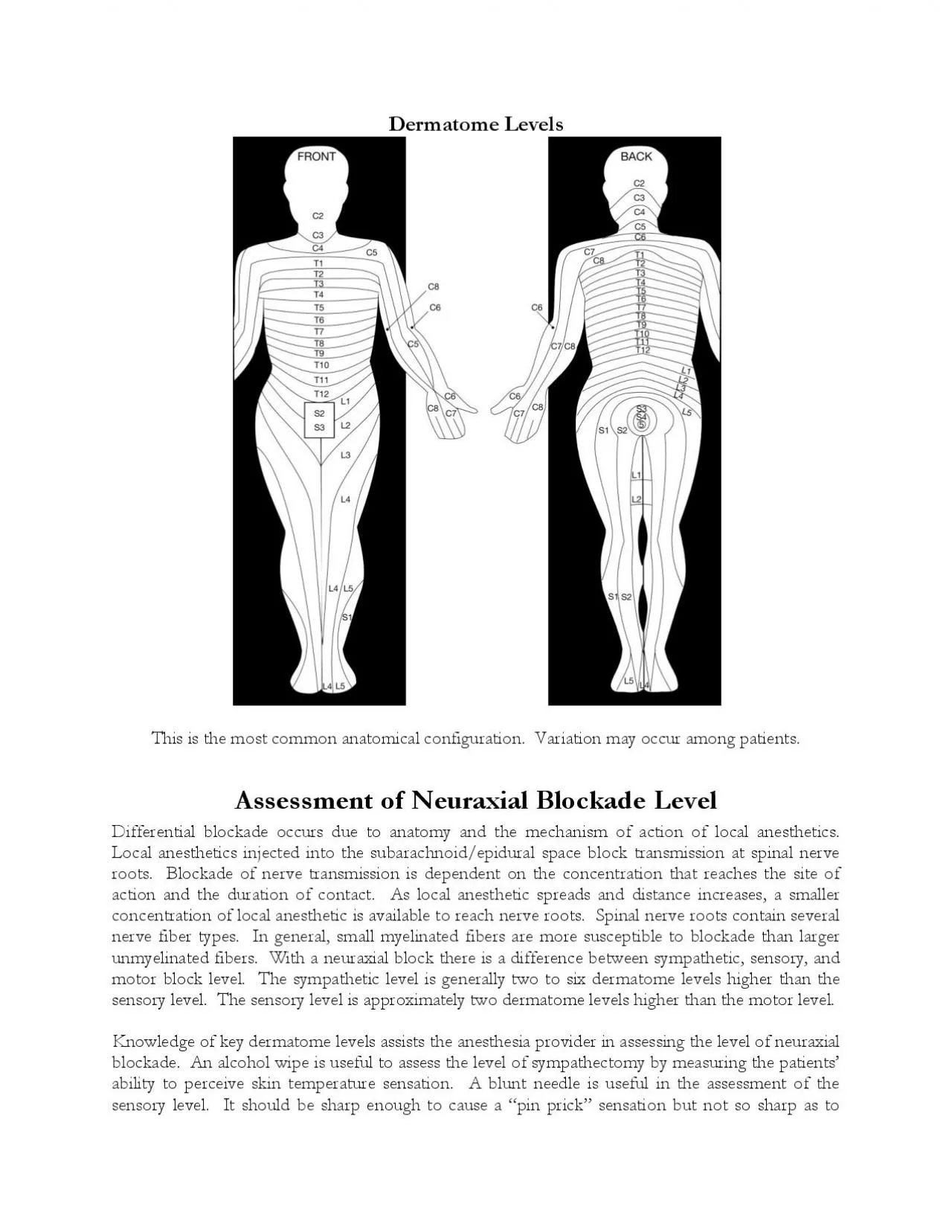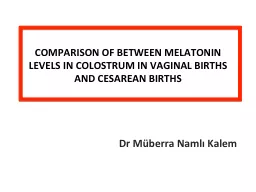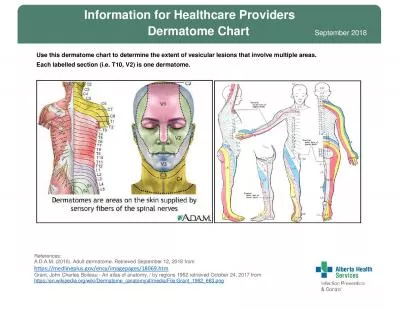PDF-Dermatome Levels
Author : lily | Published Date : 2022-09-02
This is the most common anatomical configuration Variation may occur among patients Assessment of Neuraxial Blockade Level Differential blockade occurs due to anatomy
Presentation Embed Code
Download Presentation
Download Presentation The PPT/PDF document "Dermatome Levels" is the property of its rightful owner. Permission is granted to download and print the materials on this website for personal, non-commercial use only, and to display it on your personal computer provided you do not modify the materials and that you retain all copyright notices contained in the materials. By downloading content from our website, you accept the terms of this agreement.
Dermatome Levels: Transcript
Download Rules Of Document
"Dermatome Levels"The content belongs to its owner. You may download and print it for personal use, without modification, and keep all copyright notices. By downloading, you agree to these terms.
Related Documents














